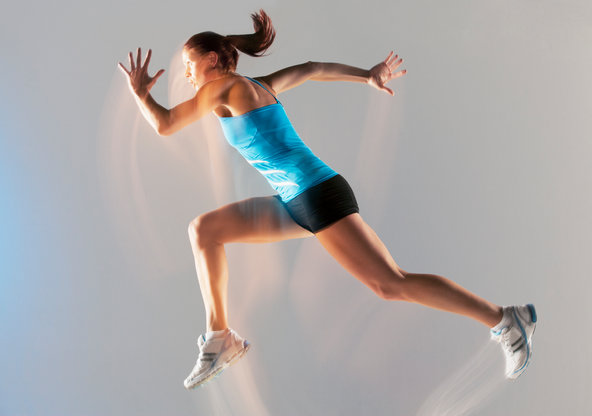Article by Miriam Stix, originally published in the Globe and Mail.
Soft cushioning in shoes has been marketed to runners as extra shock-absorption to prevent injuries, but in a new study the added padding made no difference in who got hurt.

Researchers tested identical-looking shoes with different levels of cushioning in a blind trial with nearly 250 regular runners and found factors like body weight and overall fitness made some difference to injury rates, but shoe-softness did not.
“The results do not support the common argument from the running-shoe industry that runners with higher body mass should be recommended shoes with greater shock-absorption characteristics,” said lead author Daniel Theisen of the Sports Medicine Research Laboratory of the Department of Public Health in Luxembourg.
Based on research showing that cushioning can relieve certain mechanical stresses on the body, Theisen, a physical therapist with a PhD in sports science and a runner himself, says he fully expected to see a difference.
But past tests of extra cushioning under real-world conditions, such as U.S. Air Force recruits in basic training, have not shown a clear benefit, Theisen and his colleagues write in the British Journal of Sports Medicine.
So Theisen’s team set up what it believes to be the first randomized, double-blind controlled trial of whether shoe sponginess affects running-related injuries in leisure runners.
The researchers recruited runners through newspaper advertisements and Internet sites and randomly divided the 247 participants into two groups. The men and women were all between the ages of 30 and 50 years old, had body mass indexes (a measure of weight relative to height) ranging from normal to slightly overweight and all ran a minimum of 10 miles a week.
Participants got shoes provided by “a renowned sports equipment manufacturer,” according to the report, which were customized versions of a model sold in stores. There were no identifying decorations on the shoes, and all appeared identical except that half of the pairs had a soft midsole – a spongy layer beneath the insole of the shoe’s interior. The difference in shock-absorbing qualities between the shoes with and without the extra cushioning was calculated to be about 15 per cent.
According to Theisen, this was the greatest difference possible while still producing a shoe that looked the same to users. Even the researchers did not know which participants received the softer shoes.
The runners were required to train at least once a week, to only use the shoes for running and to report their training data and any injuries. Participants used the shoes for five months, and posted information about how much they ran and what kinds of injuries they experienced on a dedicated Internet platform.
Out of the 69 runners whose injuries were counted, 32 used the hard-soled sneakers, and 37 used the softer-soled shoes.
Although the researchers found no significant difference in injuries based on shoe cushioning, they did note some differences related to runners’ body mass and other individual traits and behaviour.
Heavier runners were about 13-per-cent more likely to have injuries than those in the normal weight range – and shoe softness did not modify that extra risk for heavy runners who got the softer shoes. Having a previous injury added about 75 per cent to runners’ injury risk and higher-intensity training added 39 per cent to the risk.
In contrast, previous running experience more than halved a runner’s injury risk relative to those with no experience. And participants with the highest levels of weekly participation in other types of sports had about 30-per-cent lower risk of running injuries.
Theisen says the results suggest that running style and other personal factors outweigh shoe qualities in determining injury risk. Individuals tend to adapt their running style based on the pattern of how their feet strike the surface, he said. Although the study did not analyze this factor, the authors think this adaptation cancels out the shock-absorbing characteristics of the soft-cushioned shoes.
The difference between the study shoe models may also have been too small to detect a difference, he notes. In general, however, Theisen thinks the study results “make good sense because our ancestors were great runners but they never wore running shoes.”
Dr. Mark P. Kelly, an exercise physiologist with the American Council on Exercise and a veteran runner himself, was not surprised by the findings.
If anything, cushioning “takes away from the tactile sensation that tends to protect a runner,” Kelly, who is currently investigating the effects of so-called minimal shoes on running injuries and running gait, said. “In other words, if something hurts our feet when we are jogging, we will naturally change things up so it doesn’t hurt. If anything, a harder midsole offers more protection, because it may induce more stability on the plantar surface of the foot and thus spread the impact out more evenly.”















